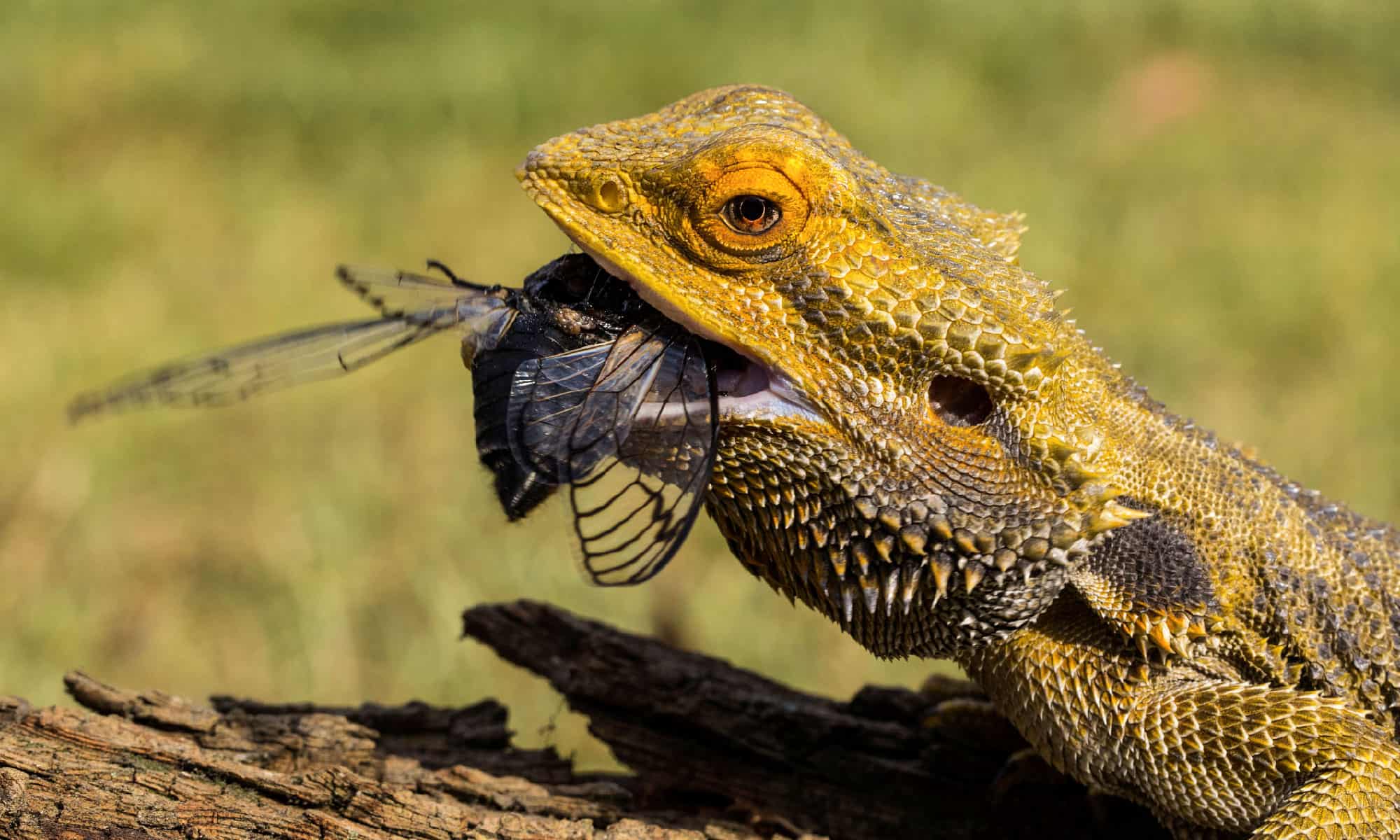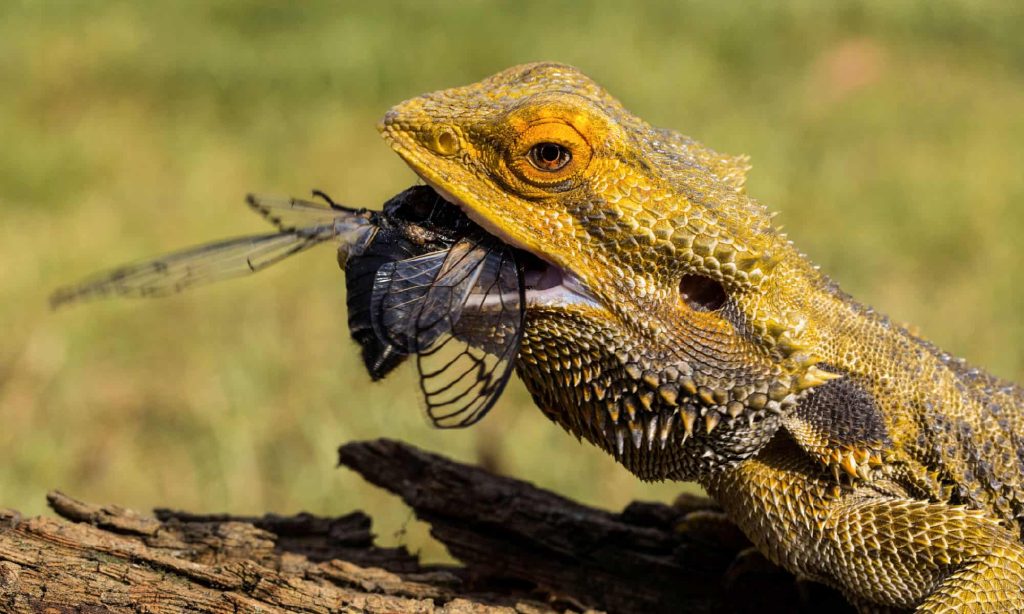Bearded dragons are fascinating creatures that have taken over the hearts of many reptile lovers. They are docile, easy to care for, and have a unique appearance that is hard to resist. However, one question that often arises in the mind of a bearded dragon enthusiast is, are bearded dragons nocturnal?
This question is not as straightforward as it may seem. Bearded dragons are diurnal, which means they are active during the day. However, they also have some nocturnal tendencies. In this article, we will explore the sleeping habits of bearded dragons, their activity levels during the day and night, and whether or not they need a heat source at night. So, let’s dive in and learn more about these fascinating creatures!

Are Bearded Dragons Nocturnal?
Bearded Dragons are fascinating creatures that make for great pets due to their friendly nature and low maintenance requirements. One of the common questions that many people have about these lizards is whether they are nocturnal or not. In this article, we will explore the nocturnal habits of Bearded Dragons in detail.
What is a Nocturnal animal?
Nocturnal animals are those that are active during the night and sleep during the day. These animals have adapted to the darkness and have developed special senses to help them navigate and hunt in the dark. Some common examples of nocturnal animals include bats, owls, and raccoons.
Are Bearded Dragons Nocturnal?
Bearded Dragons are not nocturnal animals. In fact, they are diurnal, which means they are active during the day and sleep at night. This is because Bearded Dragons need sunlight to regulate their body temperature and to produce vitamin D3, which is essential for their bone health.
What are the habits of Bearded Dragons during the day?
During the day, Bearded Dragons are very active. They love basking in the sun and can often be found lying on rocks or logs to soak up the warmth. They also enjoy exploring their surroundings and hunting for insects. Bearded Dragons are social animals and enjoy interacting with their owners.
What are the benefits of having a diurnal pet?
Having a diurnal pet like a Bearded Dragon can be very beneficial. Since these animals are active during the day, they are more likely to be awake and alert when their owners are around. This means that you can interact with your pet and watch them as they go about their daily activities.
What are the disadvantages of having a nocturnal pet?
Nocturnal pets can be challenging to take care of since they sleep during the day and are active at night. This means that you may not be able to interact with them as much as you would like. Additionally, nocturnal pets may be more prone to health problems since they are not getting enough sunlight and may not be able to regulate their body temperature properly.
Bearded Dragon vs. Nocturnal animal
When it comes to choosing a pet, it’s essential to consider your lifestyle and preferences. If you are looking for a pet that is active during the day and sleeps at night, then a Bearded Dragon may be the perfect choice for you. On the other hand, if you prefer a pet that is active at night and sleeps during the day, then a nocturnal animal may be a better fit.
Table: Comparison between Bearded Dragon and Nocturnal Animal
| Bearded Dragon | Nocturnal animal |
|---|---|
| Active during the day | Active at night |
| Requires sunlight and warmth to stay healthy | Does not require sunlight and warmth |
| Low maintenance | High maintenance |
Conclusion
In conclusion, Bearded Dragons are diurnal animals that are active during the day and sleep at night. They require sunlight and warmth to stay healthy and are low maintenance pets. If you are looking for a pet that is active during the day and enjoys interacting with its owners, then a Bearded Dragon may be the perfect choice for you.
Frequently Asked Questions
Are Bearded Dragons Nocturnal?
Bearded dragons are diurnal animals, which means they are active during the day and sleep at night. Unlike nocturnal animals, bearded dragons do not have the ability to see in the dark very well. They require a heat source and light to regulate their body temperature and metabolism, which is why it is important to provide a proper lighting schedule for them.
While they may be active during the day, bearded dragons can also be active at dawn and dusk. This is known as crepuscular activity and is a natural behavior for these animals. During this time, they may hunt for food or bask in the sun before retreating to their hideouts for the night.
Do Bearded Dragons Need a Nighttime Heat Source?
While bearded dragons are diurnal and do not require a nighttime heat source, it is still important to provide them with a proper temperature gradient. This means that the basking spot should be warm and the cooler side of the enclosure should be cooler.
At night, the temperature should drop to simulate natural conditions. However, if the temperature drops too low, it can be detrimental to the health of your bearded dragon. In this case, you may need to provide a low wattage heat source to maintain a safe temperature.
What Kind of Lighting Do Bearded Dragons Need?
Bearded dragons require two types of lighting: UVB lighting and basking lighting. UVB lighting is necessary for the production of vitamin D3, which is essential for the absorption of calcium. Basking lighting provides warmth and helps regulate their body temperature and metabolism.
The UVB lighting should be on for 10-12 hours a day and replaced every 6-12 months. The basking light should be on for 12-14 hours a day and should be replaced every 6 months. It is important to provide a proper lighting schedule to prevent health issues such as metabolic bone disease.
What Do Bearded Dragons Eat?
Bearded dragons are omnivores and require a balanced diet of both insects and vegetables. Their diet should consist of 70% insects and 30% vegetables. Some good insect options include crickets, mealworms, and dubia roaches. Good vegetable options include collard greens, kale, and carrots.
It is important to gut-load the insects before feeding them to your bearded dragon and provide a calcium and vitamin supplement. Avoid feeding them insects that are too large or hard to digest. Also, avoid feeding them insects caught in the wild, which may carry parasites or diseases.
How Do You Handle a Bearded Dragon?
Bearded dragons can be handled, but it is important to do so correctly. Always approach them from the front and avoid grabbing them from the top or behind. This can cause them to feel threatened and potentially bite or scratch.
Support their body and use a gentle touch. Avoid squeezing them too tightly or dropping them. It is also important to wash your hands before and after handling them to prevent the spread of bacteria. With proper handling, your bearded dragon can be a great companion and a joy to interact with.
I was VERY Wrong About Bearded Dragons
In conclusion, the answer to whether bearded dragons are nocturnal is not a straightforward one. While they do have some nocturnal tendencies, they are primarily diurnal creatures. However, it is important to understand that every bearded dragon is unique, and their behavior patterns can vary depending on their individual personalities, age, health, and environment.
Despite their primarily diurnal nature, it is not uncommon for bearded dragons to be active during the early morning or late evening hours. They may also become more active during the cooler months when temperatures are more comfortable for them. Moreover, it is not unusual for younger bearded dragons to be more active at night than older ones.
It is important to note that, despite their nocturnal tendencies, bearded dragons still require adequate exposure to light during the day to maintain their health and regulate their body temperature. Therefore, it is recommended to provide them with a regular schedule that includes both light and dark periods to ensure their overall well-being.

